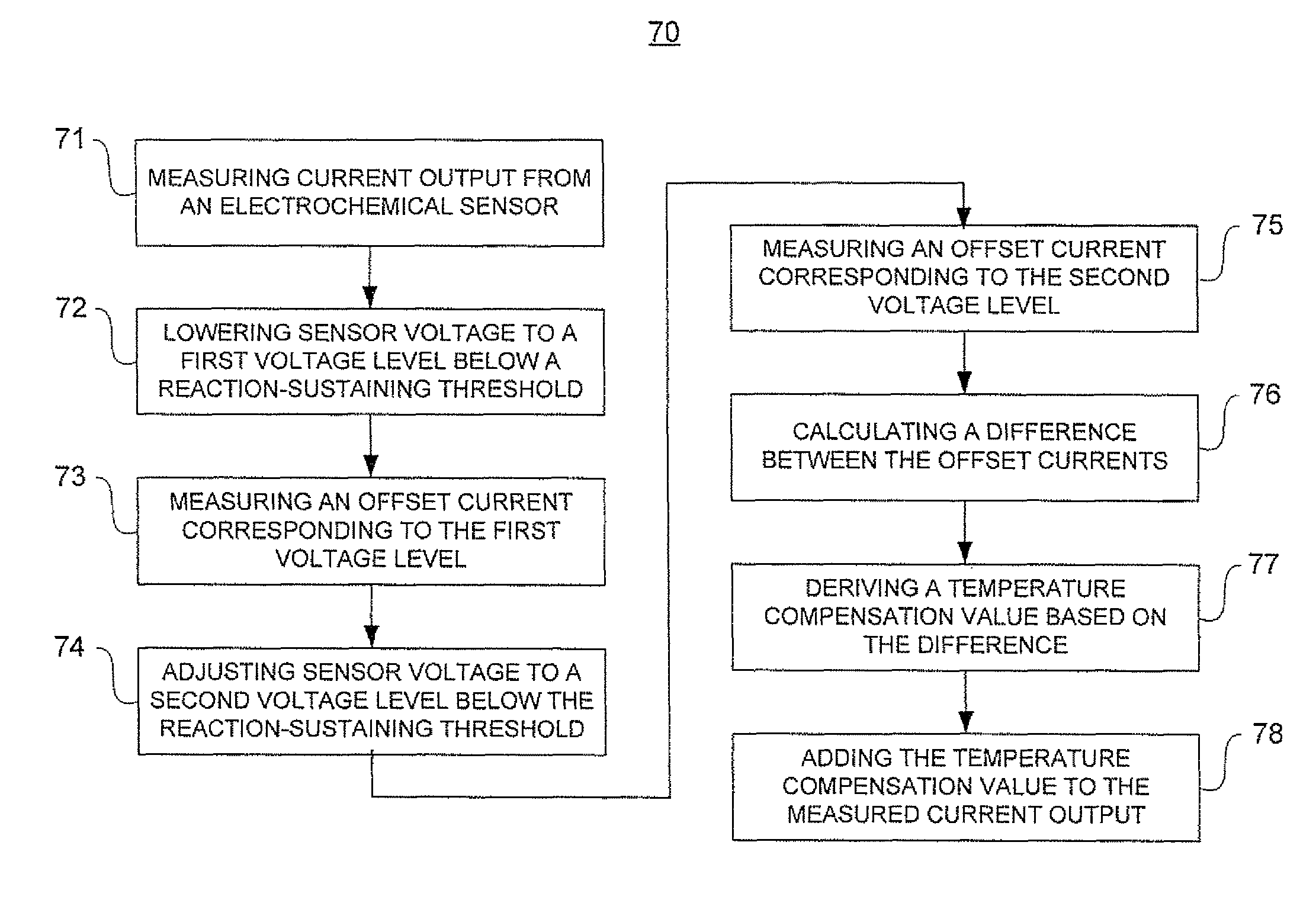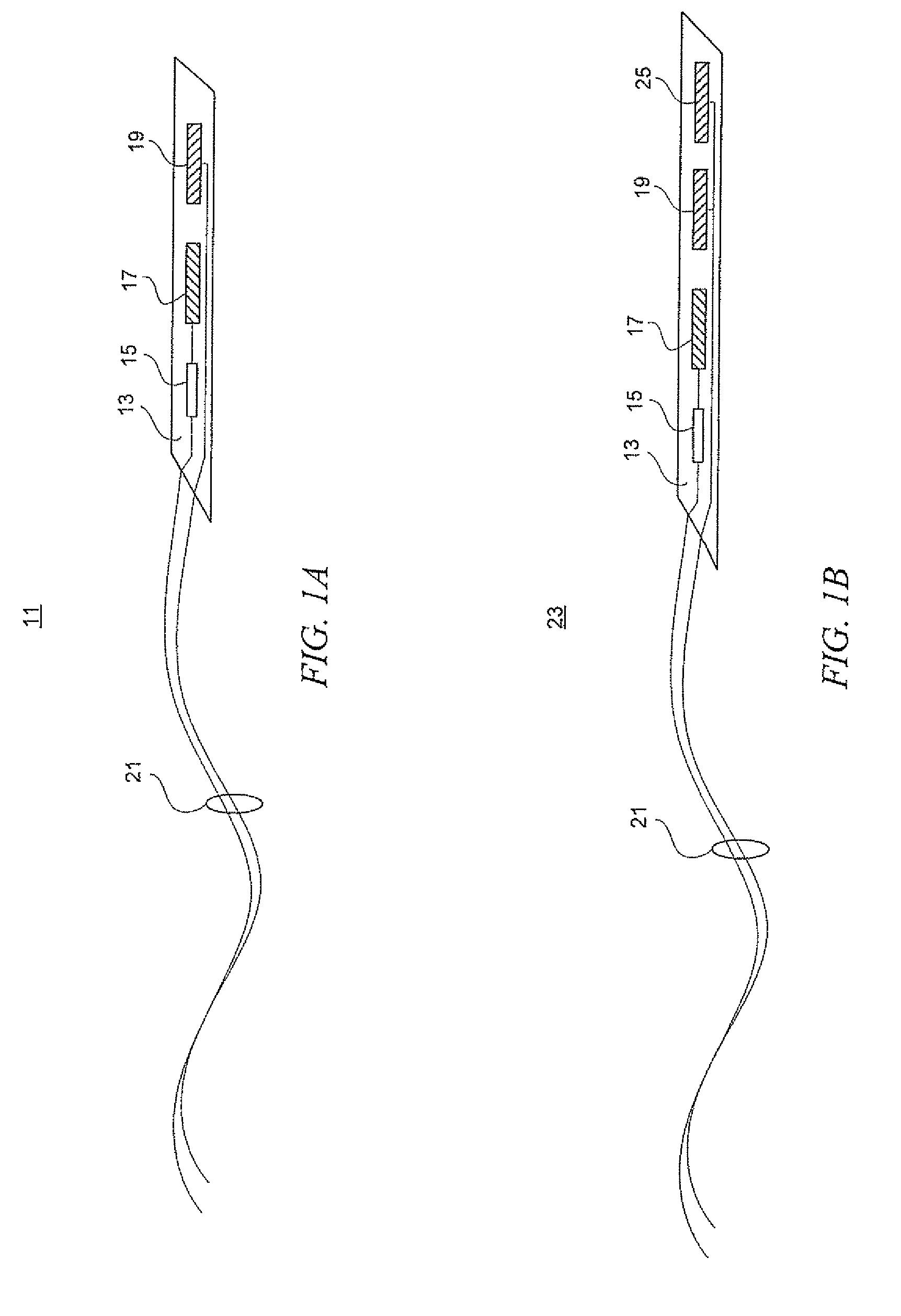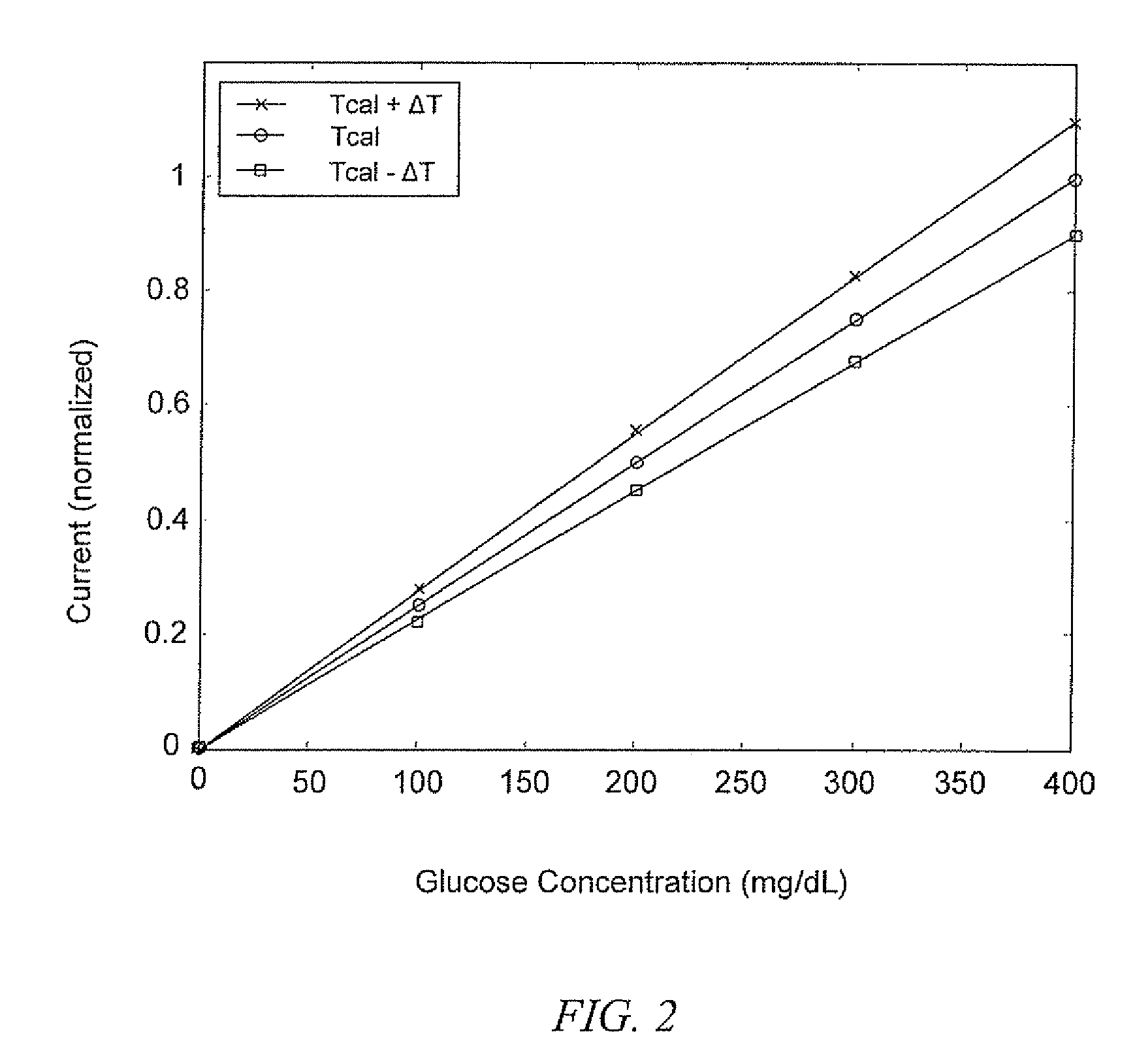Monitoring and compensating for temperature-related error in an electrochemical sensor
a technology of electrochemical sensors and temperature-related errors, which is applied in the field of automatic compensation of temperature-related errors in intravenous amperometric sensors, can solve the problems of loss of accuracy as the sensor outputs more, temperature-related errors, and invalidating calibration curves
- Summary
- Abstract
- Description
- Claims
- Application Information
AI Technical Summary
Benefits of technology
Problems solved by technology
Method used
Image
Examples
Embodiment Construction
[0020]The invention discloses technology that compensates for temperature-related errors in the output of electrochemical sensors. The invention uses the response of the sensor itself to detect temperature, without the need for separate temperature measuring devices. This advancement has particular importance in sensing applications with spatial restrictions, such as certain invasive medical procedures. For example, an amperometric sensor may be used to monitor blood chemistry or other medical conditions in a patient. The sensor may be mounted on a catheter and inserted into the patient intravenously to allow for continuous monitoring of an analyte of interest. During installation, the catheter is carefully maneuvered through a blood vessel until it reaches a desired internal location. In a procedure such as this, there is little to no additional space available on the catheter for accommodating ancillary devices such as temperature sensors.
[0021]One application of the invention is ...
PUM
 Login to View More
Login to View More Abstract
Description
Claims
Application Information
 Login to View More
Login to View More - R&D
- Intellectual Property
- Life Sciences
- Materials
- Tech Scout
- Unparalleled Data Quality
- Higher Quality Content
- 60% Fewer Hallucinations
Browse by: Latest US Patents, China's latest patents, Technical Efficacy Thesaurus, Application Domain, Technology Topic, Popular Technical Reports.
© 2025 PatSnap. All rights reserved.Legal|Privacy policy|Modern Slavery Act Transparency Statement|Sitemap|About US| Contact US: help@patsnap.com



